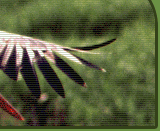Damages to oaks by burning of dry grass Description: During inventory of Osmoderma eremita*, it has been observed that many oaks have been affected by burning. Most often oak burning is caused by burning of the old grass without presence of people. This activity is very widespread in Latvia, especially in spring. Grass burning regularly occurs in areas with large unmanaged grasslands with dense layer of old grass. In meadows that are regularly mown or grazed, the absence of dense layer of old grass makes it more resistant against burning. Location: Sita and Pededze floodplains, Mugurve meadows, Pededzes lejtece, Rakupe meadows, Vidusburtnieks meadows Impact on habitat and species: Oak burning has significant negative impact on the Osmoderma eremita*. If the oak holes are located at the root part of the tree or close to a ground, which is often the case with oaks hosting Osmoderma eremita*, the fire burns out these holes destroying the population of Osmoderma eremita* as well as the red rot that provides the living environment of the species. The burning very often causes death of the trees thereby limiting the possibility that the tree will become suitable again for the species as it avoids invading trees that are already dead. As the grassland fires happen in large areas it may affect most of the trees in the meadow thus reducing the possibility that the species could spread out again from the neighbouring trees. Sole standing oaks are favourite perching spots for Aquila pomarina* and Aquila clanga*. | 







